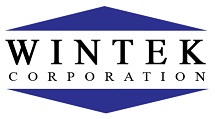Wintek designs membrane-based dehydration systems dehydration systems in scenarios that require bulk water removal in lieu of high dryness levels. Wintek utilizes membrane systems that can operate with as much as 30 wt% water in the feed stream. These systems reach a product purity of less than 1 wt% water. Membrane dryer systems achieve a very high product recovery, as high as 99.5%. This type of dehydration system can be used as an alternative to Wintek’s molecular sieve dehydration units. A key difference which makes the membrane dehydration system more effective is that it can separate a wider variety of molecules, specifically azeotropes. Additionally, we have also designed membrane-MSDU hybrid systems to achieve high dryness levels with high amounts of water removal.
Membrane dryer systems utilize porous tubular membranes that pass only water through the membrane barrier in a process known as pervaporation. The solvent passes through the membrane vessel without interacting with the membrane at all. Again, this physical separation is how our systems are able to break through azeotropes which limit most dehydration processes in industry.
Membrane based dehydration systems require less energy than distillation systems or molecular sieves. Membrane systems are easier to operate. With minimal controls required compared to other separation techniques, they can be far more efficient in some cases. Additionally, Wintek’s expertise in coupling membrane dehydration units with process vacuum systems delivers the optimal membrane-dehydration system.
